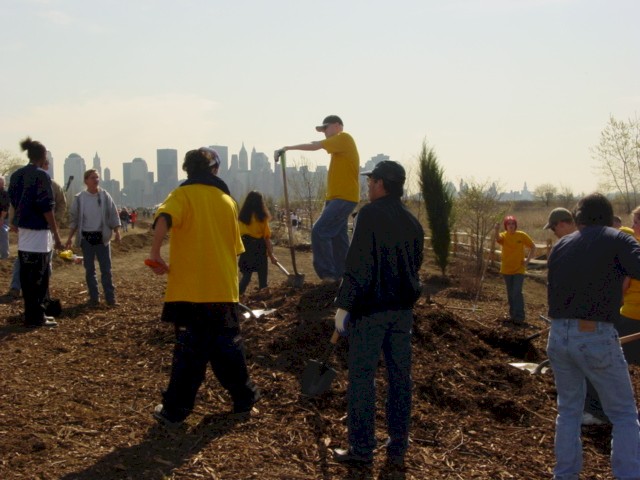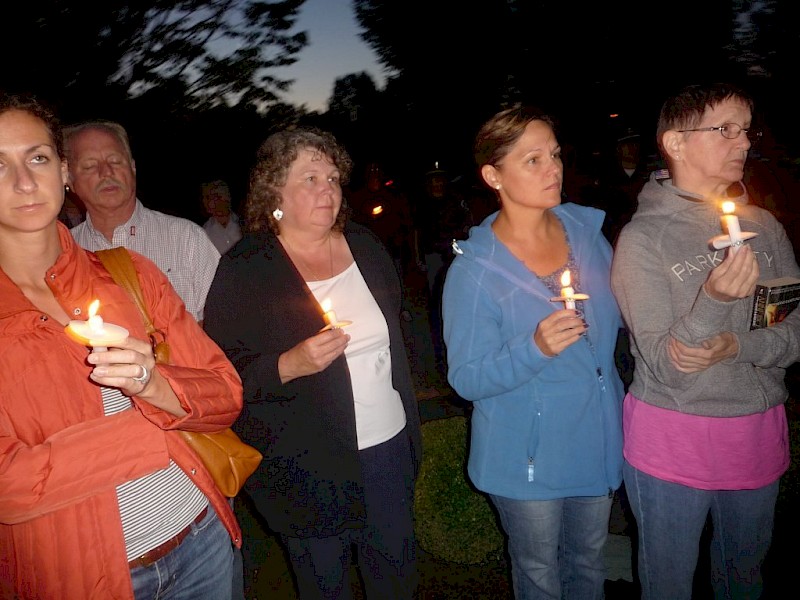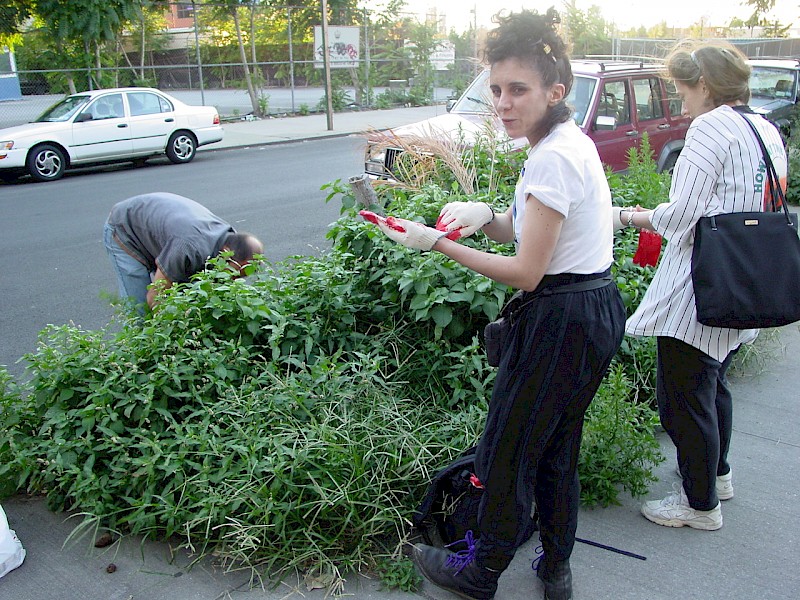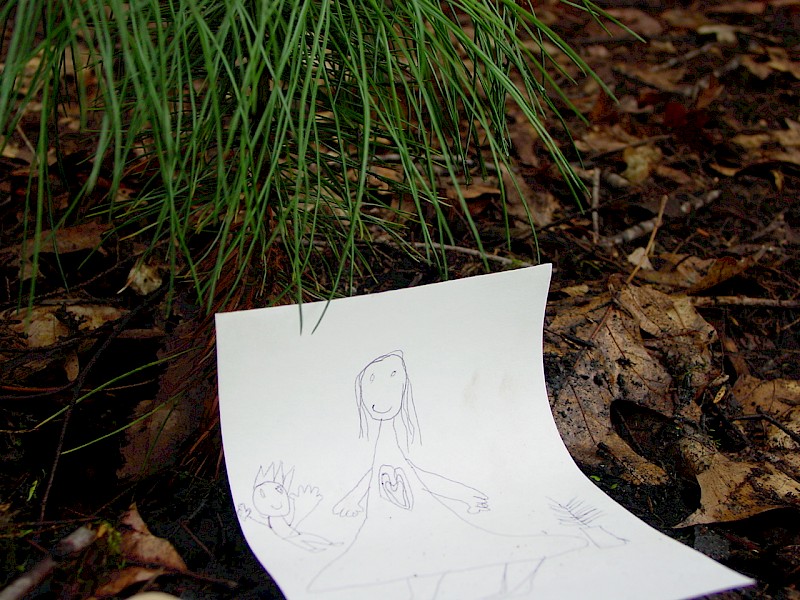‘The power of living things’
Living memorials as therapeutic landscapes
—
In response to the events of 11 September 2001 (9/11), many communities came together to create living memorials. Many living memorials were established near the crash sites, but others were created across the United States from urban to rural areas, with designs ranging from entire forests to single trees. They were created by surviving family members, supporters of local firefighters, medical center staff, teachers and students, garden club members, performance artists, religious leaders, foresters, and other members of the public.
Between 2002 and 2004, the Living Memorials Project was initiated by the US Forest Service to support and document the creation of living memorials. Forty-two sites received funding from the Forest Service via an open call for proposals. The Living Memorials Project then focused on documenting the development of these and other living memorials, with the goal of deepening understanding of community-managed greenspace. As Forest Service social scientists, from 2002 to 2006 we mapped 687 living memorials, exploring their social and biophysical dimensions through semistructured interviews with stewards from 117 groups (Svendsen and Campbell 2010). Interviewees were men and women, primarily between thirty and fifty years of age, and they represent a range of people who were affected by the events of 9/11, from surviving family members to community members to coworkers to religious and civic leaders, among others. We also took photographs to capture memorials’ overall design, specific features of interest, and events held on site. Today, we continue to trace the evolution of several community-driven sites, primarily in the New York City area.
Our photo essay examines living memorials to 9/11 as ‘therapeutic landscapes’ (Gesler 1993), a concept that focuses our attention on human-environment interactions and the ways those interactions can foster the health of communities and individuals. More specifically, through images and interviews we examine the therapeutic power of planting and caring for flora at memorials, an activity that stewards described as providing an outlet to process trauma and grief, a powerful setting of social support, and a place to engage with the rhythms and spiritual power of nature. We also examine how stewards use plants as symbols to help tell particular stories.
A way of ‘doing something’
Many stewards we interviewed described feeling overwhelmed and helpless upon learning about the plane crashes, and experiencing an intense desire to ‘do something’. The organizer of the Grove of Remembrance in Jersey City, NJ, recalled, ‘as foresters, there wasn’t a lot we could do. … And when the federal funding came along suddenly we had something to do, which was amazing’. She described how planting trees facilitated both an emotional release and the transformation of a former brownfield site into a forested area. A manager in the New York City Parks Department, who helped transplant damaged, dust-covered trees from an area adjacent to Ground Zero to a nearby memorial site, said, ‘we were driven by the need to do something … feelings of helplessness. … We felt we were … addressing that helplessness in a way by making sure that these trees survived’.
 1. The New York City skyline provides the backdrop as stewards plant hundreds of trees and perennials in the Grove of Remembrance. Jersey City, New Jersey.
1. The New York City skyline provides the backdrop as stewards plant hundreds of trees and perennials in the Grove of Remembrance. Jersey City, New Jersey.Kinship
Interviewees described how the creation and ongoing stewardship of the memorials facilitated and strengthened therapeutic relationships with others who were grieving. As one woman explained, creating the memorial was ‘cathartic. … It made us happy. … It came from our heart. Especially when you see the people there who go to remember their loved ones’. Another man described the ‘natural kinship’ he felt with others as they planted trees. Stewards often came together to function like support groups and support group leaders who helped to heal each other and the wider community. ‘We have tears together’, said a woman in Glen Rock, New Jersey, as she reflected on those she worked with from the memorial’s organizing committee.
 2. Stewards gather at a candlelight 9/11 memorial ceremony at the Manalapan Arboretum. Manalapan, New Jersey (courtesy of ‘An American Remembrance in the Manalapan Arboretum’ memorial)
2. Stewards gather at a candlelight 9/11 memorial ceremony at the Manalapan Arboretum. Manalapan, New Jersey (courtesy of ‘An American Remembrance in the Manalapan Arboretum’ memorial)Engagement with nature
The stewardship of the flora in living memorials allowed interviewees to connect with what they identified as the healing cycles of nature. One man explained, ‘Gardening is a kind of soul mending. Soothing. It connects you to different pace of life, and the fact that, you know, things heal, regrow, there’s a cycle. I don’t know if it’s true for everyone, for me it’s a meditative form. You’re doing something that has a greater meaning and connects you to nature, to life, to others’. Another steward described digging holes for memorial trees at a site in Manhattan as a ‘manifestation of some kind of spirituality’ that was ‘driven by the need to…get our hands in the soil’. Stewards at the Healing Garden of the Federated Garden Clubs of New York State described weeding, watering, and engaging in horticulture as their ‘therapeutic outlet’. Although many urban living memorials are in busy and exposed spaces, which might not convey healing to a passerby, even in these sites stewards reflected on the ‘beautiful times’ they had had ‘under those trees’ with people who had also come to remember and grieve. As one woman put it, ‘That’s the power of living things’.
 3. Healing Garden of the Federated Garden Clubs of New York State, located in a traffic island in Staten Island, New York
3. Healing Garden of the Federated Garden Clubs of New York State, located in a traffic island in Staten Island, New YorkSymbolism
Stewards imbued living memorials with particular narratives and symbolism by planting particular kinds of flora. In Coney Island, stewards chose the willow as the first tree they planted, because it ‘signifies sadness’ and ‘represents emotion’. In Staten Island, smoke trees were planted in honor of fallen firefighters. In Manhattan, sunflowers were planted because, in the words of a steward from Sunflower Project NYC, ‘like New Yorkers, sunflowers are tenacious, surviving and thriving in adverse conditions’.
 4. The Sunflower Project NYC guerilla planted sunflower seeds in the days immediately following 9/11 to reintroduce life into an otherwise stark streetscape.
4. The Sunflower Project NYC guerilla planted sunflower seeds in the days immediately following 9/11 to reintroduce life into an otherwise stark streetscape.At multiple sites, ‘survivor trees’ were replanted as symbols of unity and resilience. The original survivor tree that endured the blasts at Ground Zero was rescued, rehabilitated, and replanted at what is now the National September 11 Memorial and Museum. A steward who cared for this tree explained, ‘To me, the tree represents the ability of an organism to thrive, and it also represents how great our city is. … New Yorkers are survivors’. Seeds from the original survivor tree have been propagated and saplings have been distributed. One of these was acquired and planted at the September 11 Family Group Memorial in Coney Island, Brooklyn, where a steward alluded to the complex relationship memorial trees have with time: ‘It brings some comfort to see [the survivor tree] because it’s almost like bringing the past and the future together’. As the project leader of the Sterling Forest Memorial in Tuxedo, New York, similarly described, forests are ‘filled with the chaos of trees fallen by disease, sudden death from lightening or heavy snows and other causes’, but are also ‘filled with rebirth, new life, and hope’. These dual qualities, he concluded, imbued the Sterling Forest Memorial site with ‘the essence of a sacred landscape’. Often individual trees were symbolic of specific victims. A widow described the tree she planted for her husband: ‘It’s a living thing. It connects you back to the life and gives you a sense of how they continue on … and it’s still a part of the world, it’s almost like some little part of them gets imbued to the tree and so it’s like they stay where we are’.
 5. Child’s drawing placed at the white pine she planted in the memory of a loved one at Sterling Forest Memorial. Tuxedo, New York.
5. Child’s drawing placed at the white pine she planted in the memory of a loved one at Sterling Forest Memorial. Tuxedo, New York.While on the surface living memorials may be viewed as public tributes to what is lost, these photos show how these sites are active and evolving therapeutic landscapes that incorporate natural, built, social, and symbolic elements. As with community-based stewardship of greenspace along the street, in gardens and farms, and in vacant lots (Campbell and Wiesen 2009) the healing power of these living memorial sites is bound up with the materiality of digging in the soil and weeding, as well as symbolically laden gestures such as planting particular kinds of flora and placing highly meaningful objects at the sites. Our images have an emotional resonance that take us beyond stewards’ words, and depict how these flora are juxtaposed with or become part of the built landscape. They give the viewer a glimpse into moments when living memorials become a mechanism to help people grieve, share stories of loss and remembrance, support social cohesion, and engage with the rhythms and spiritual power of nature toward a shared purpose.
About the authors
Heather L. McMillen (postdoctoral research social scientist), Lindsay K. Campbell (research social scientist), and Erika S. Svendsen (research social scientist and team leader) work for the United States Department of Agriculture Forest Service, and they are based at the New York City Urban Field Station. Their research investigates urban environmental stewardship, social-ecological resilience, sustainability, and well-being.
References
Campbell, Lindsay, and Anne Wiesen, eds. 2009. Restorative Commons: Creating Health and Well-being through Urban Landscapes. Newtown Square, PA: USDA Forest Service.
Gesler, Wilbert M. 1993. ‘Therapeutic Landscapes: Theory and a Case Study of Epidauros, Greece’. Environment and Planning D: Society and Space 11, no. 2: 171–89.
Svendsen, Erika S., and Lindsay K. Campbell. 2010. ‘Living Memorials: Understanding the Social Meanings of Community-Based Memorials to September 11, 2001’. Environment and Behavior 42, no. 3: 318–34. https://doi.org/10.1177/0013916510361871.